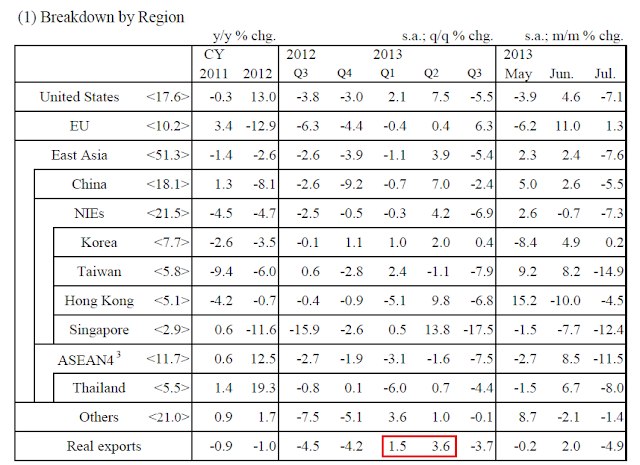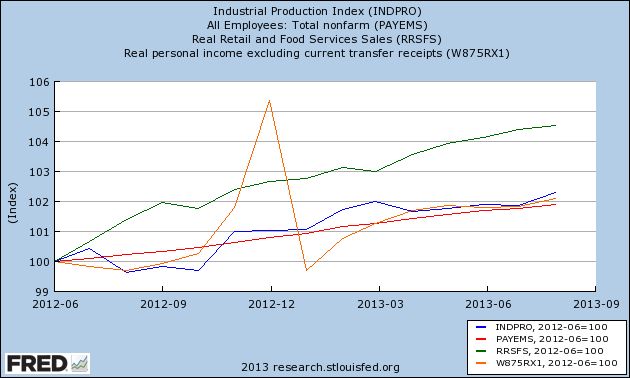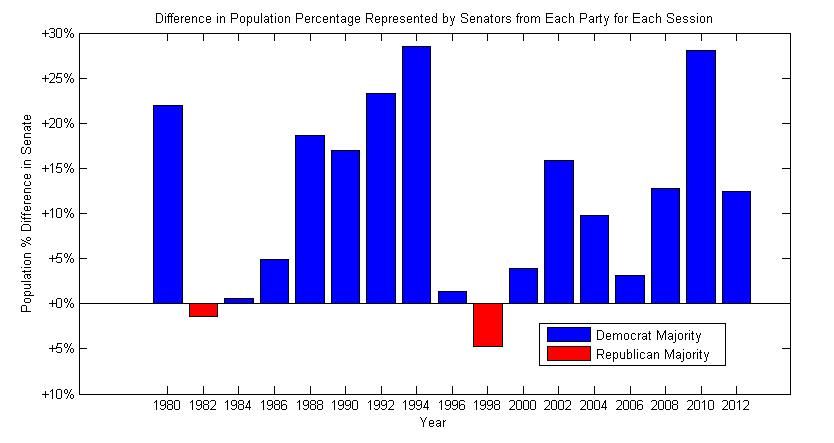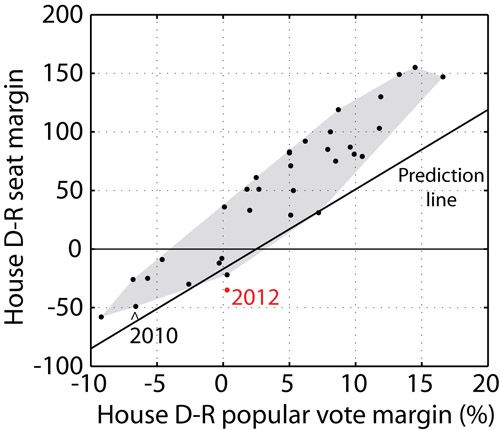- by New Deal democrat
As we all know, the government shutdown prevented the reporting of nonfarm payrolls and the unemployment rate. The best we can do is extrapolate from the ADP report that in September probably enough jobs were added to account for the increase in population, plus a little more. The Chicago PMI and the ISM manufacturing index both improved. The ISM services index, however, decreased. Perhaps more significantly, motor vehicle sales decreased to a 5 month low.
Fortunately, none of the high frequency weekly indicators I report on were affected by the shutdown. Further, two years ago, during the debt ceiling debacle, it was consumer spening holding up that told me that the economy would not tip back into recession. Consumers may be behaving differently this time around, so let's start with that:
Consumer spending
- ICSC +0.2% w/w 2.1% YoY
- Johnson Redbook +3.8% YoY
- Gallup daily consumer spending 14 day average at $86 up $2 YoY
Steel production from the American Iron and Steel Institute
- -1.3%% w/w
- +5.8%% YoY
Steel production over the last several years has been, and appears to still be, in a decelerating uptrend.
Transport
Railroad transport from the AAR
- +1500 carloads down +0.5% YoY
- +2800 carloads or +1.6% ex-coal
- +7600 or +2.9% intermodal units
- +7300 or +1.6% YoY total loads
- Harpex down -4 to 399
- Baltic Dry Index up +41 to 2084
Employment metrics
Initial jobless claims
- 308,000 up +3,000
- 4 week average 305,000 down -3000
The American Staffing Association Index was unchanged 100. It is up +5.8% YoY
Tax Withholding
- $160.4 B for the month of September vs. $133.3 B last year, up +137.1 B or +20.3%
- $148.5 B for the last 20 reporting days vs. $134.5 B last year, up +14.0 B or +10.4%
We can now estimate that after adjusting for state reporting glitches, the 4 week average was approximately 312,500. Jobless claims remain firmly in a normal expansionary mode. Like each of the last three years that this same, a good, downside breakout has occurred.
Temporary staffing had been flat to negative YoY in spring, but broke out positively for the last two months. The only time it has ever been higher was one week in 2006 and in the second half of 2007. Tax withholding, after a relatively poor August, is again posting better (but just average) comparisons.
Oil prices and usage
- Oil up +$0.97 to $103.84 w/w
- Gas down -$0.07 at $3.43 w/w
- Usage 4 week average YoY up +0.8%
Interest rates and credit spreads
- 5.37% BAA corporate bonds down -0.12%
- 2.66% 10 year treasury bonds -0.13%
- 2.71% credit spread between corporates and treasuries up +0.01%
Housing metrics
Mortgage applications from the Mortgage Bankers Association:
- -6% w/w purchase applications
- -3% YoY purchase applications
- +3% w/w refinance applications
Housing prices
- YoY this week +11.1%
Real estate loans, from the FRB H8 report:
- unchanged w/w
- -0.2% YoY
- +1.4% from its bottom
Money supply
M1
- -0.6% w/w
- +0.4% m/m
- +6.8% YoY Real M1
M2
- +0.4% w/w
- +0.5% m/m
- +5.0% YoY Real M2
Bank lending rates
- 0.225TED spread down -0.018 w/w
- 0.173 LIBOR up -0.007w/w
JoC ECRI Commodity prices
- down -0.45 to 123.31 w/w
- -1.54 YoY
There were some slight changes in the overall story this week compared the last several months. The long leading indicator of interest rates improved, although mortgage refinance applications and real estate loans have all turned negative, and this week were joined by purchase mortgage applications. Money supply remains positive and seems to have stopped decelerating. Spreads between corporate bonds and treausries were slightly negative again this week.
The shorter leading indicators of initial jobless claims are very positive. Temporary employment has turned strongly positive in the last two months. The oil choke collar has disengaged. Commodities are neutral. Manufacturing is positive, but motor vehicle sales sagged to a 5 month low.
The coincident indicators of transportation -- rail traffic and shipping - remain positive. Steel production is positive. Bank lending rates are at or near or at record lows. Tax withholding has also improved in September. House prices remain strongly positive.
Given its crucial signal two years ago, the rapid deceleration of Gallup consumer spending is a real concern. The ICSC is relatively weak, although still positive. Johnson Redbook, on the other hand, is strongly positive. Left to its own devices, the economy appears to be picking up steam for the rest of the year, but the decline in auto sales add to the concern that increased interest rates may result in outright contraction in 2014. Do I really need to add that the government shutdown, let alone that the Congress may be about to turn deadbest on US debt obligations can only make the situation worse?
Have a nice weekend.


















